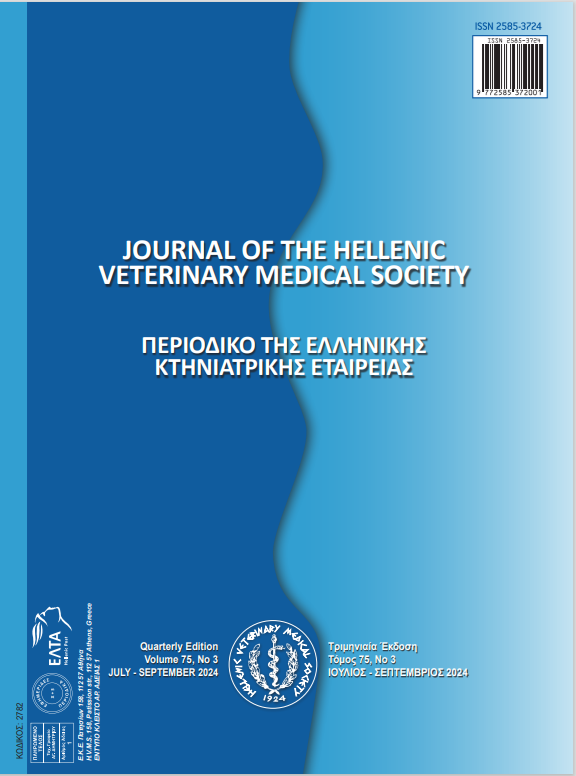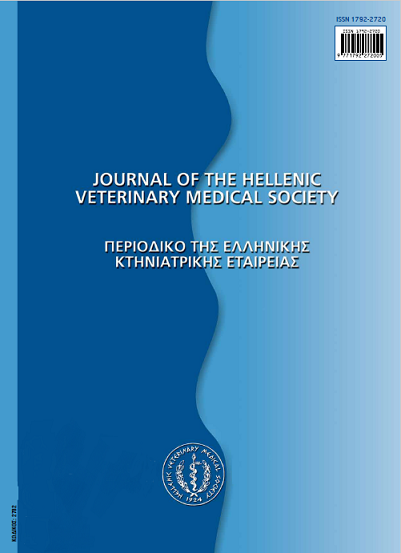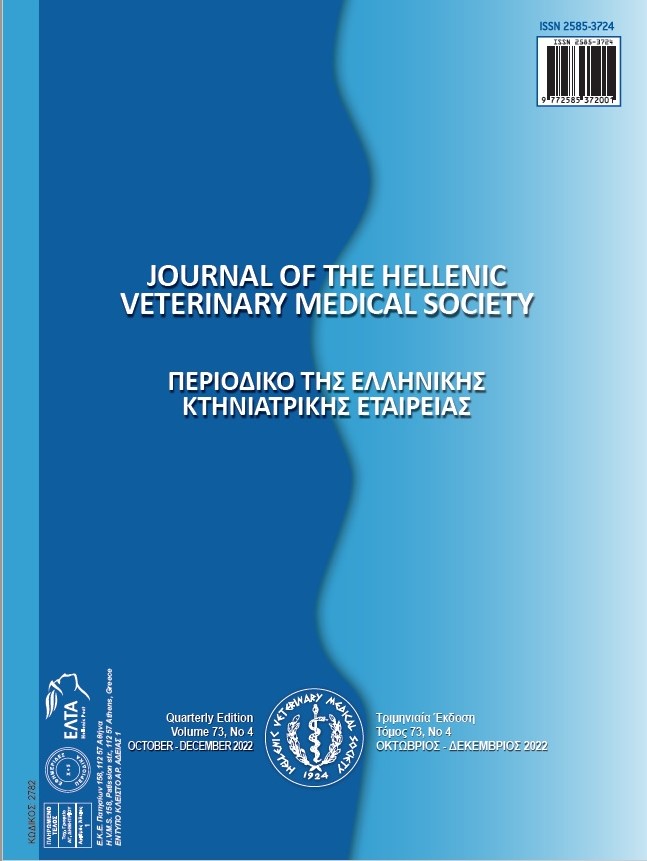The effect of Vitamin C in the therapy of haemolactia in dairy cows
Abstract
The aim of this study was to evaluate the effects of intravenous administration of vitamin C in the therapy of haemolactia in dairy cows. Haemolactia is often of unknown origin, and it can occur due to vitamin C deficiency. The research was carried out on twenty-eight dairy cows having clinical signs of haemolactia, with a clinical score of 2 or 3. The cows of the group A (n=10) were treated intravenously with 2000 mg vitamin C, those of the Group B (n=10) with 3000 mg vitamin C intravenously, whereas cows of group C (n=8) were served as controls and remained untreated. The vitamin C application was once per day intravenously until symptoms disappeared. The appearance of milk and the therapeutic effects of vitamin C were monitored during milking, based on the visual appearance of milk. The average duration of haemolactia in both treated groups A and B was significantly lower (72 h and 68 h, respectively) compared to the control group C (102 h) (p<0.05 for both). Vitamin C was shown to be beneficial in the therapy of haemolactia; no statistical difference was observed regarding the administered doses of vitamin C (2000 vs. 3000 mg). The results prove the importance of vitamin C administration to shorten the duration of haemolactia in dairy cows
Article Details
- Come citare
-
Ninković, M., Arsić, S., Žutić, J., Bojkovski, J., Zdravković, N., & Panousis, N. (2024). The effect of Vitamin C in the therapy of haemolactia in dairy cows. Journal of the Hellenic Veterinary Medical Society, 75(3), 7709–7714. https://doi.org/10.12681/jhvms.34534
- Fascicolo
- V. 75 N. 3 (2024)
- Sezione
- Research Articles

Questo lavoro è fornito con la licenza Creative Commons Attribuzione - Non commerciale 4.0 Internazionale.
Authors who publish with this journal agree to the following terms:
· Authors retain copyright and grant the journal right of first publication with the work simultaneously licensed under a Creative Commons Attribution Non-Commercial License that allows others to share the work with an acknowledgement of the work's authorship and initial publication in this journal.
· Authors are able to enter into separate, additional contractual arrangements for the non-exclusive distribution of the journal's published version of the work (e.g. post it to an institutional repository or publish it in a book), with an acknowledgement of its initial publication in this journal.
· Authors are permitted and encouraged to post their work online (preferably in institutional repositories or on their website) prior to and during the submission process, as it can lead to productive exchanges, as well as earlier and greater citation of published work.








